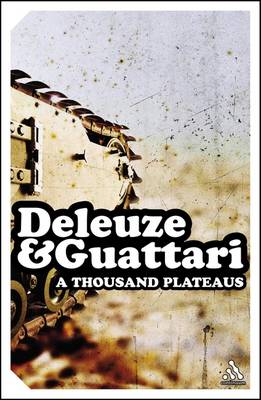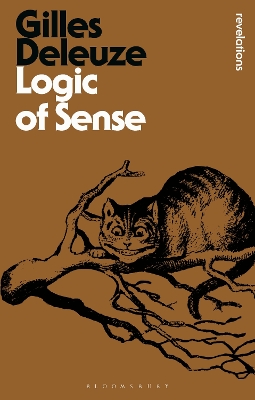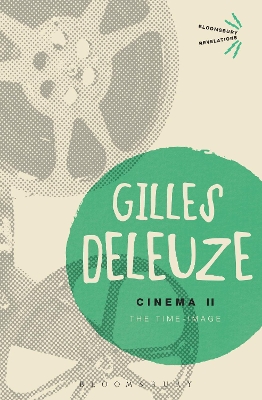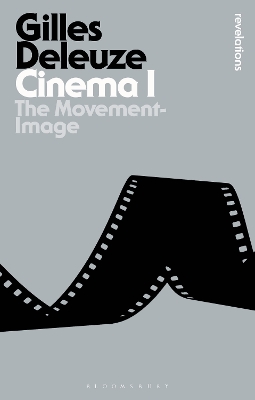Bloomsbury Revelations
6 total works
Illuminating Bacon's painting's the nonrational logic of sensation, and the act of painting itself, this work--presented in lucid and nuanced translation--points beyond painting toward connections with other arts such as music, cinema, and literature. "Francis Bacon is an indispensable entry point into the conceptual proliferation of Deleuze' philosophy as a whole.
This book has set the agenda for contemporary Continental philosophy, arguing for a new theory of radical democracy in politics and art. A Thousand Plateaus completes the landmark philosophical project, Capitalism and Schizophrenia, which Deleuze and Guattari began with Anti-Oedipus. Together, the two volumes are widely regarded as the single most brilliant work of Continental philosophy of the last 40 years.
Logic of Sense is one of Deleuze’s seminal works. First published in 1969, shortly after Difference and Repetition, it prefigures the hybrid style and methods he would use in his later writing with Felix Guattari. In an early review Michel Foucault wrote that Logic of Sense ‘should be read as the boldest and most insolent of metaphysical treatises’.
The book is divided into 34 ‘series’ and five appendices covering a diverse range of topics including, sense, nonsense, event, sexuality, psychoanalysis, paradoxes, schizophrenia, literature and becoming and includes fascinating close textual readings of works by Lewis Carroll, Sigmund Freud, Seneca, Pierre Klossowski, F. Scott Fitzgerald, and Émile Zola. Logic of Sense is essential reading for anyone interested in post-war continental thought.
The book is divided into 34 ‘series’ and five appendices covering a diverse range of topics including, sense, nonsense, event, sexuality, psychoanalysis, paradoxes, schizophrenia, literature and becoming and includes fascinating close textual readings of works by Lewis Carroll, Sigmund Freud, Seneca, Pierre Klossowski, F. Scott Fitzgerald, and Émile Zola. Logic of Sense is essential reading for anyone interested in post-war continental thought.
Gilles Deleuze was one of the most influential figures in twentieth-century philosophy, whose master-works, Difference and Repetition and – with Felix Guattari - A Thousand Plateaus and Anti-Oedipus have become one of the most widely-influential bodies of work in contemporary thought.
Cinema II is Deleuze’s second work on cinema, completing the reassessment of the art form begun in Cinema I. Influenced by the philosophy of Henri Bergson, Deleuze here offers a compelling analysis of the cinematic treatment of time and memory, thought and speech. The work draws on examples from major film makers, including Federico Fellini, Alfred Hitchcock and Orson Welles, among many others.
Cinema II is Deleuze’s second work on cinema, completing the reassessment of the art form begun in Cinema I. Influenced by the philosophy of Henri Bergson, Deleuze here offers a compelling analysis of the cinematic treatment of time and memory, thought and speech. The work draws on examples from major film makers, including Federico Fellini, Alfred Hitchcock and Orson Welles, among many others.
Since its publication in 1968, "Difference and Repetition", an exposition of the critique of identity, has come to be considered a contemporary classic in philosophy and one of Deleuze's most important works. The text follows the development of two central concepts, those of pure difference and complex repetition. It shows how the two concepts are related, difference implying divergence and decentring, repetition being associated with displacement and disguising. The work moves deftly between Hegel, Kierkegaard, Freud, Althusser and Nietzsche to establish a fundamental critique of Western metaphysics, and has been a central text in initiating the shift in French thought - away from Hegel and Marx, towards Nietzsche and Freud. The author's other works include "Nietzsche and Philosophy" (1983), "Kant's Critical Philosophy" (1984), "Cinema I" (1986), "Cinema II" (1989) and "Logic of Sense" (1990).
Gilles Deleuze was one of the most influential figures in twentieth-century philosophy, well known for his works on the philosophy of art and for his master-works, Difference and Repetition and - with Felix Guattari - A Thousand Plateaus and Anti-Oedipus.
Cinema I is the first volume of Deleuze's revolutionary work on the theory of cinema (concluded in Cinema II, also available in the Bloomsbury Revelations series). Drawing on the philosophy of Henri Bergson, Deleuze identified his work as "a logic of the cinema", setting out to "isolate certain cinematographic concepts" philosophically. To do this, he brings together diverse examples from a variety of major filmmakers, including Ingmar Bergman, Charlie Chaplin, Sergei Eisenstein and Alfred Hitchcock, among many others.
Cinema I is the first volume of Deleuze's revolutionary work on the theory of cinema (concluded in Cinema II, also available in the Bloomsbury Revelations series). Drawing on the philosophy of Henri Bergson, Deleuze identified his work as "a logic of the cinema", setting out to "isolate certain cinematographic concepts" philosophically. To do this, he brings together diverse examples from a variety of major filmmakers, including Ingmar Bergman, Charlie Chaplin, Sergei Eisenstein and Alfred Hitchcock, among many others.




